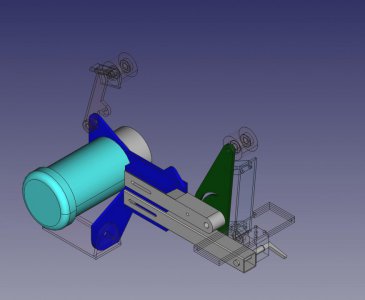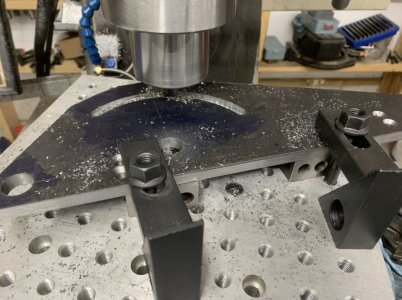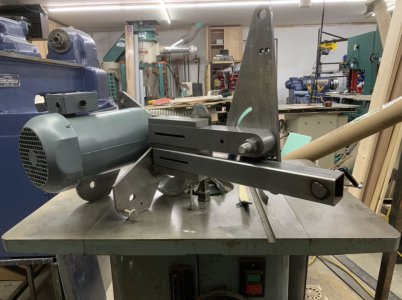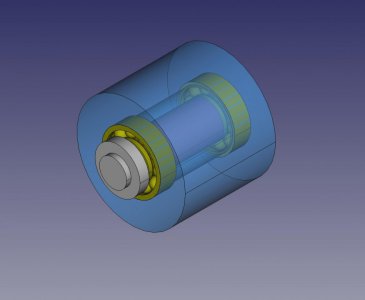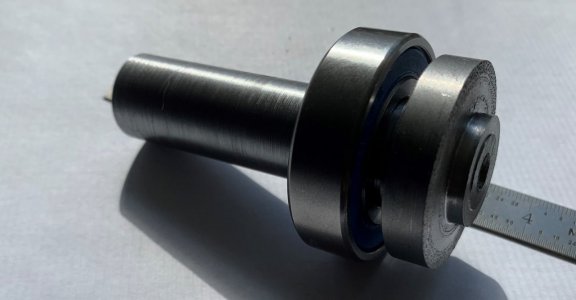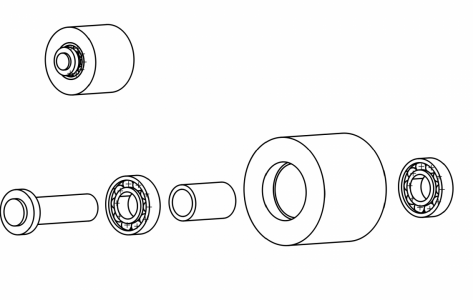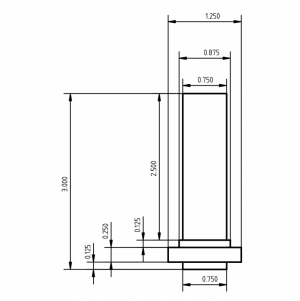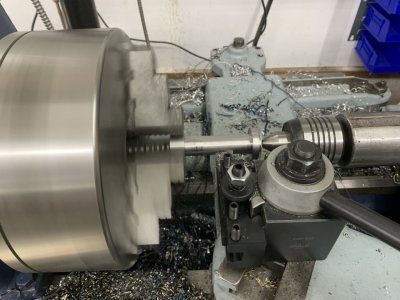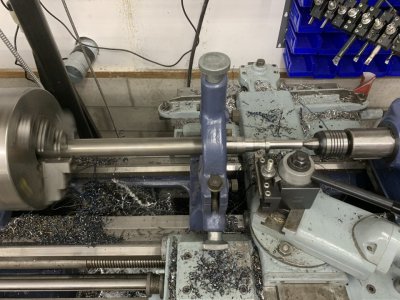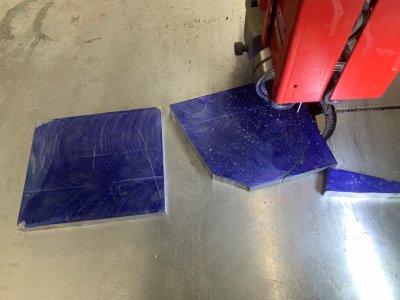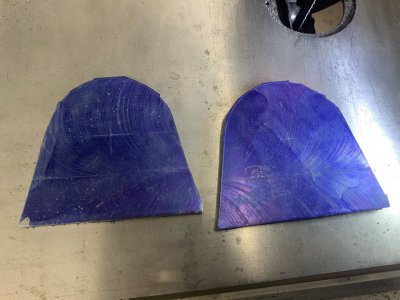Next steps -
1) Build the pivoting base so I can bolt this thing down to something stable. The hole in the side (only needed on one side really) will be for a spring pin to lock the pivot in place. I may need to think about this a bit too, I doubt the pivot will see a lot of motion. The center shaft for the grinder to pivot on is 3/4" diameter. The ears on the above part are 3/8" thick, that strikes me as a fairly high pressure area and I may want to add some sort of bushing to increase the contact area to reduce wear/extend life. I'm inclined to avoid grease as it'll just hold grindings.
Some sort of bolt holes will go in the bottom of this piece:
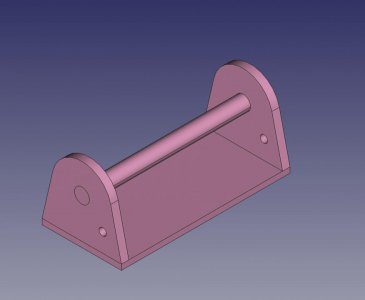
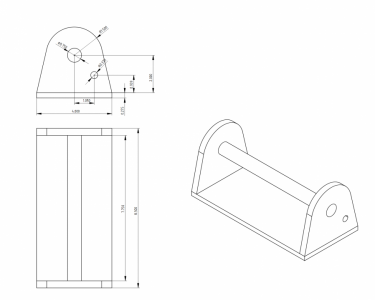
2) Build the three rollers, need two of them to mount on the front
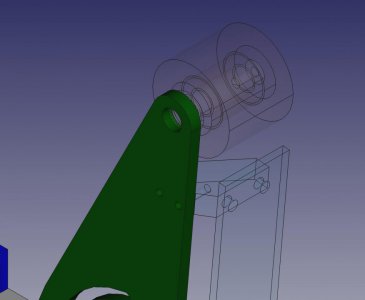
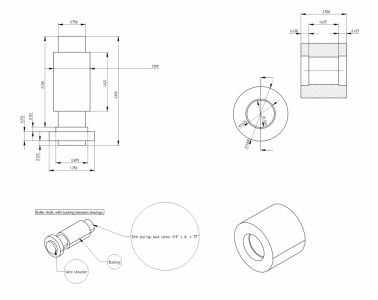
I'm running out of 3/8" x 6 hot roll which most of this is made out of, including that pivot base. I ordered another 20' stick to be delivered in a week or so. I also need that material for the new building as bases for the bridge crane legs, so I'll use plenty of it. I'd really like another one of the Glacern 45 degree face mills, so I can keep one set up for aluminum and one for steel. Swapping inserts is tedious. But the new shop, and wiring, is going to crimp my budget for a while.
The rollers (belt wheels) are somewhat complicated in terms of parts count. And not fully illustrated. Three parts to be built, the aluminum roller, the center shaft, and the bushing. In addition there will be two R12 bearings per roller. As an artifact of learning freecad, the bushing is illustrated as an integral part of the central shaft, but will be a separate bushing/collar(?) between the bearings. Point is when the retaining bolt on he end is tightened down, pressure should go through the inner race of the bearings and through that bushing. The aluminum wheel should have just a bit (i.e., a few thou) of axial play on the bearings so that there is not an axial preload on those bearings. I think this is the right way to do this ...
The central shaft will get plug welded into the dark green arm. I'll need to fixture that pretty carefully as they need to be perpendicular to the face or the belt won't run true.
I did order a new boring bar and some ccgt32 aluminum inserts to cut those rollers, waiting on those. I can go ahead and make the wheel shaft and bushing (1018), beyond that I'm waiting on tooling and material orders.
